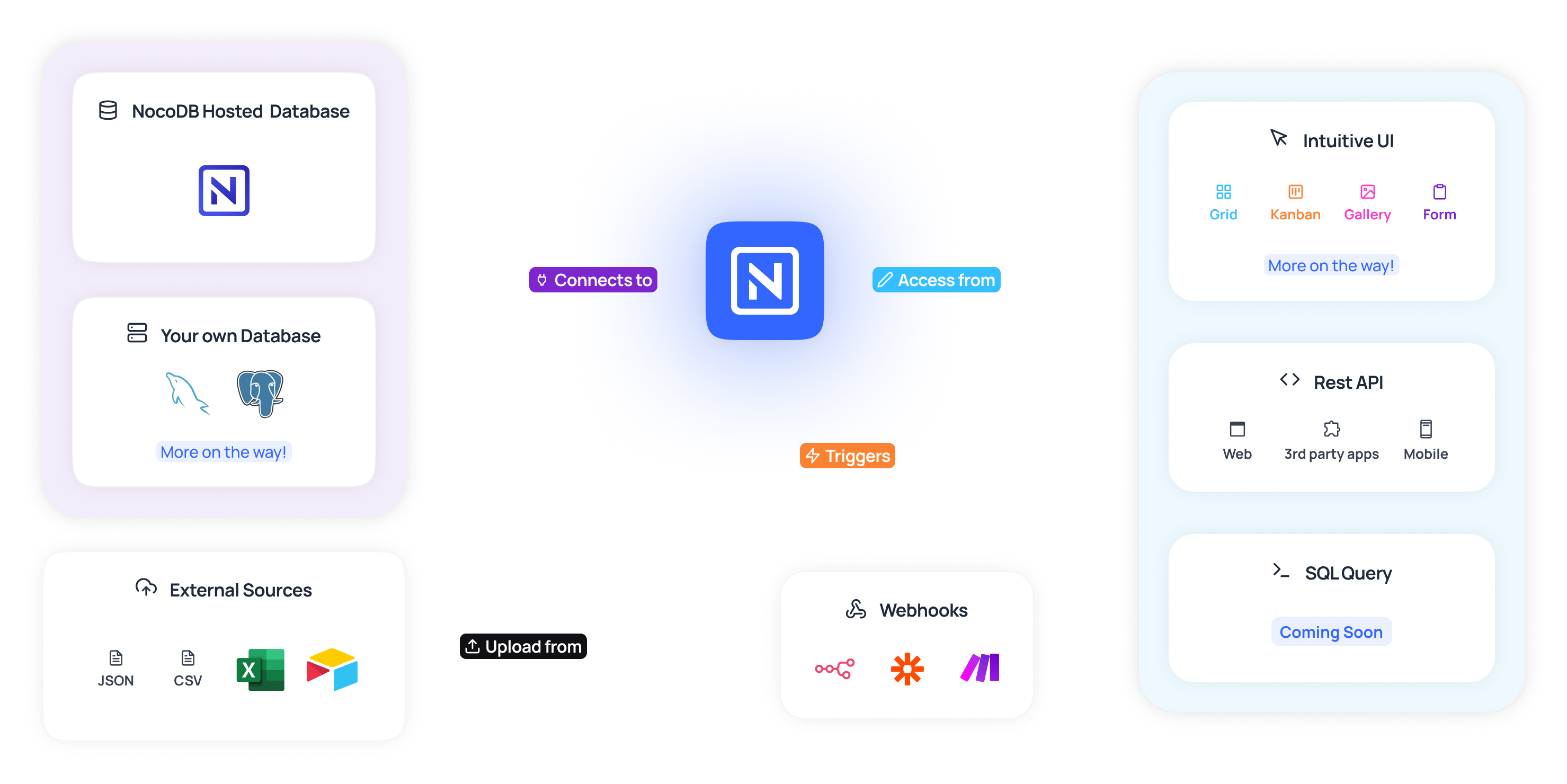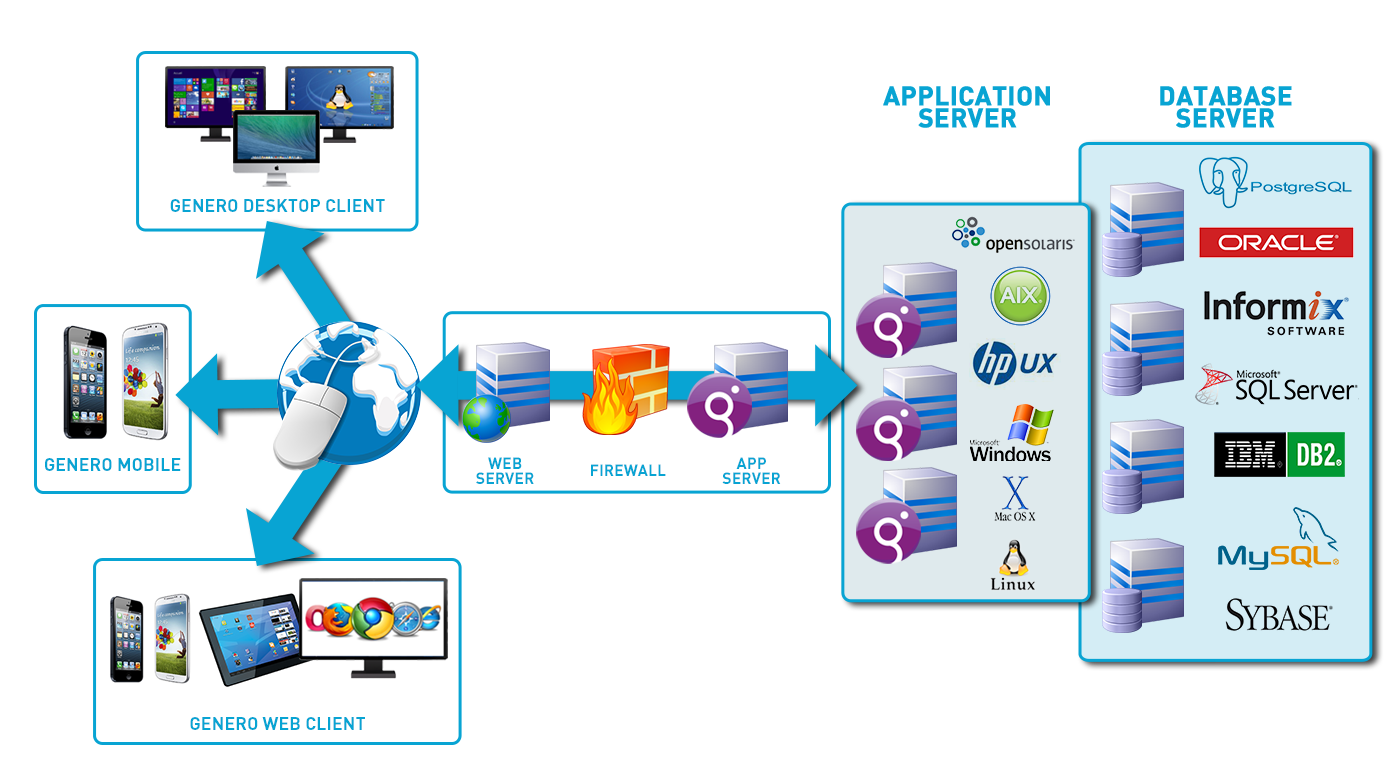Develop Open System Databases Conveniently with the very best No-Code Equipment Available
Develop Open System Databases Conveniently with the very best No-Code Equipment Available
Blog Article
Checking Out the Advantages of Scalable Data Sources That Require No Coding Skills for Efficient Information Monitoring Solutions
The introduction of scalable data sources that remove the necessity for coding skills provides a transformative possibility for companies looking for efficient data monitoring services. As we think about the ramifications of such innovations, it becomes essential to take a look at exactly how they can improve the landscape of information monitoring and drive lasting development in an affordable setting.
Boosted Accessibility for Users
Enhanced ease of access for individuals is an important facet of scalable databases, ensuring that data management systems are user-friendly and instinctive. In a period where data-driven choices are vital, availability enables a wider variety of users, consisting of those without considerable technological proficiency, to involve with data source systems successfully. This democratization of data access assists in boosted partnership across divisions, encouraging workers to extract insights and make notified choices.
User-friendly interfaces, such as aesthetic information and drag-and-drop features representation, simplify intricate data communications. These enhancements lower the discovering curve connected with typical database monitoring, allowing users to concentrate on leveraging data instead of facing technological complexities. Moreover, scalable data sources frequently include adjustable control panels and real-time analytics, offering customers with immediate understandings tailored to their certain needs.

Cost-Effectiveness and Source Cost Savings
Effective information administration not just depends upon accessibility but additionally on cost-effectiveness and resource savings. Scalable data sources designed for customers without any coding abilities substantially reduce economic concerns typically linked with standard database monitoring systems. By getting rid of the demand for specialized programs knowledge, companies can assign their sources more successfully, focusing funds on core company tasks instead of comprehensive training or working with proficient employees.
Additionally, these data sources usually make use of cloud-based services, which better minimize costs connected to hardware and maintenance. Organizations can scale their database options according to their requirements, preventing the costs sustained from over-provisioning resources. This adaptability implies services can adjust to changing demands without sustaining unneeded costs, causing significant long-term cost savings.
Furthermore, straightforward user interfaces streamline data entrance and administration procedures, lowering the moment spent on administrative tasks. This efficiency translates into labor expense savings, enabling groups to concentrate on critical campaigns as opposed to regular upkeep. On the whole, taking on scalable data sources that call for no coding abilities cultivates an extra affordable method to data administration, allowing organizations to maximize their resources while maintaining high levels of operational efficiency.
Improved Collaboration Throughout Teams

Furthermore, scalable data sources assist in seamless interaction among employee. With straightforward interfaces that call for no coding skills, workers can conveniently produce, change, and share records or control panels tailored to their certain demands. This democratization of data encourages non-technical users to contribute understandings, enhancing the collaborative atmosphere.
In addition, these data sources sustain concurrent gain access to, permitting multiple individuals to function on the same dataset concurrently. This feature improves performance, as teams can participate in joint data evaluation without the risk of version control problems. The capacity to leave notes or remarks straight within the database even more promotes dialogue and clarifies information interpretations.
Streamlined Information Monitoring Processes
In today's data-driven setting, organizations acknowledge the need of structured information monitoring refines to optimize effectiveness and accuracy. By leveraging scalable databases that require no coding skills, companies can simplify their information handling and reduce the intricacies typically related to traditional database systems. This ease of access empowers non-technical customers to involve straight with data, facilitating quicker decision-making and lowering dependence on specialized IT workers.
Streamlined information administration processes boost process by automating routine jobs such as data entry, recognition, and reporting. Automated information you can check here assimilation makes sure that information from numerous resources is aggregated flawlessly, getting rid of silos and fostering an unified sight of crucial company metrics (no-code). Straightforward interfaces permit personnel to control information easily, allowing them to generate insights that drive critical initiatives without the requirement for extensive training.
This effectiveness not just accelerates functional procedures but likewise decreases the capacity for human mistake, ensuring that data continues to be accurate and trustworthy. Ultimately, structured information management processes with scalable data sources bring about enhanced productivity, enabling companies to concentrate on core tasks while guaranteeing that their information monitoring techniques are effective and efficient.
Scalability for Expanding Services

For expanding enterprises, the ability to scale up or down is essential. A scalable data source can handle an influx of data produced from brand-new consumers, items, or solutions, making certain that organization procedures remain undisturbed. These data sources supply the ability to take care of peak lots successfully, which is important during periods of quick development or seasonal spikes.
In addition, several scalable database services are created with easy to use user interfaces that need no coding abilities, equipping non-technical staff to take care of information successfully (no-code). This democratization of data that site monitoring enables organizations to allocate resources purposefully and minimize dependency on specialized IT personnel
Eventually, embracing a recommended you read scalable data source not just boosts functional effectiveness but additionally promotes a setting where services can advance and innovate without the constraints of traditional data source systems. This flexibility settings companies for long-term success in today's affordable landscape.
Conclusion
Finally, scalable data sources that need no coding abilities supply considerable benefits for reliable data management. These systems enhance ease of access for non-technical customers, decrease functional costs, and advertise partnership throughout groups. By enhancing information monitoring processes and using scalability for expanding businesses, such options make it possible for organizations to adapt to altering demands successfully. Inevitably, the fostering of these user-friendly databases promotes advancement and settings organizations for lasting success in a vibrant setting.
Enhanced accessibility for users is a crucial facet of scalable databases, making certain that data management systems are easy to use and instinctive.Easy to use interfaces, such as visual data and drag-and-drop features depiction, streamline intricate information interactions. In general, taking on scalable databases that require no coding abilities promotes a more cost-efficient technique to data monitoring, allowing companies to optimize their resources while preserving high levels of functional efficiency.
By leveraging scalable data sources that require no coding abilities, companies can streamline their data handling and reduce the complexities generally linked with conventional data source systems - no-code.Streamlined information management procedures enhance process by automating regular tasks such as information entry, recognition, and coverage
Report this page